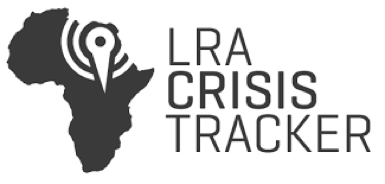
A project of Invisible Children and The Resolve LRA Crisis Initiative
+ ICC trial of former LRA commander Dominic Ongwen resumes this week
+ New research examines dramatic events surrounding Ongwen’s 2014 defection, which spurred creation of splinter LRA group operating independently of LRA leader Joseph Kony
+ Fracturing of LRA since 2014 has undermined Kony’s control over LRA command structure, leads to increased attacks on civilians in eastern Central African Republic (CAR)
WASHINGTON (17 January 2016) – Fracturing in the Lord’s Resistance Army (LRA) command structure is weakening Joseph Kony’s control over the rebel group, but also increasing the LRA’s threat to civilians in eastern CAR. As the International Criminal Court (ICC) trial of former LRA rebel commander Dominic Ongwen resumes this week, a new report released today examines the dramatic events surrounding his 2014 defection from the LRA and their ripple effect on the LRA’s command structure. The report, Dominic Ongwen’s Domino Effect, also highlights the need for enhanced efforts to encourage defections from the LRA and protect civilians from LRA factions.
SUPPORT PROGRAMS THAT BRING CHILD SOLDIERS HOME & DISMANTLE THE LRA FROM THE BOTTOM UP
“Dominic Ongwen’s defection in 2014 helped trigger a fracturing within the LRA that is only now being understood,” said Paul Ronan, director of The Resolve. “Joseph Kony’s control of the LRA is weakening, bringing new opportunities to encourage defections from the rebel group.”
In late 2014, a group of Ugandan LRA officers, including Ongwen, began plotting to defect from the LRA. In November 2014, Achaye Doctor, a longtime LRA officer and one of Ongwen’s co-conspirators, orchestrated the escape of nine Ugandan LRA fighters, while Ongwen remained in an LRA group under Kony’s command. Suspecting Ongwen had played a role in Achaye’s duplicity, Kony ordered Ongwen beaten and held in detention, only to see him escape weeks later with the help of LRA members sympathetic to his plight. Soon after defecting, Ongwen was transferred to the ICC, where he is currently on trial for 70 counts of war crimes and crimes against humanity.
As Ongwen’s fate unfolded, Achaye and his followers decided against surrendering to Ugandan and US troops stationed in eastern CAR, as most previous LRA defectors have done in recent years. Instead, they began operating as an independent, self-identified splinter group. In 2015 and 2016, they abducted dozens of young men and women in eastern CAR and northern Democratic Republic of Congo, seeking to increase their fighting capacity. LRA forces under Kony’s command also increased attacks in eastern CAR in 2016, the LRA’s most violent year there since 2010, with LRA factions abducting a total of more than 500 Central Africans.
The fracturing of the LRA’s command structure has important implications for the future of counter-LRA initiatives, emphasizing the need for improved civilian protection mechanisms and more effective defection messaging and reintegration programs. The decision of Achaye and his followers to remain active and continue targeting civilians despite being independent of Kony tests long-held assumptions that killing or capturing the LRA leader would lead to a swift dissolution of the rebel group. Unless defection messaging and reintegration programs targeting LRA combatants improve, Kony’s death or capture may instead lead to the creation of more LRA splinter groups that threaten civilians in eastern CAR and northern DRC.
“Communities in eastern CAR are already targeted by a host of armed groups, and a fracturing LRA puts children and communities in eastern CAR at a higher risk of attack,” said Sean Poole, Director of International Programs at Invisible Children. “A more effective strategy that includes community-based approaches to protect civilians from the LRA and other armed groups must be developed and resourced.”
Ugandan troops deployed in eastern CAR have led counter-LRA operations in recent years with substantial US support, including President Barack Obama’s deployment of dozens of US Special Forces advisers in 2011. Ugandan and US military offensives and defection messaging have helped reduce the number of LRA combatants from approximately 400 in 2010 to less than 150 today, but the effectiveness of military operations and the pace of LRA combatant defections has waned considerably in recent years.
The future of the US–Ugandan counter-LRA partnership is also in flux. The Ugandan military is the only force in the region currently capable of pursuing Kony and the LRA, but Ugandan officials have announced plans to withdraw their troops from eastern CAR in 2017. President Obama made his counter-LRA strategy a priority within his broader agenda in Africa, but it is unclear whether the incoming administration of President-elect Donald Trump will re-authorize the deployment of US military advisers or continue funding defection messaging initiatives. Should the Ugandan and US governments scale back their counter-LRA efforts, more pressure will be placed on national militaries and UN peacekeeping missions in CAR and DRC to protect civilians from the LRA, a responsibility they are currently ill-prepared to assume.
Think people should hear about this?